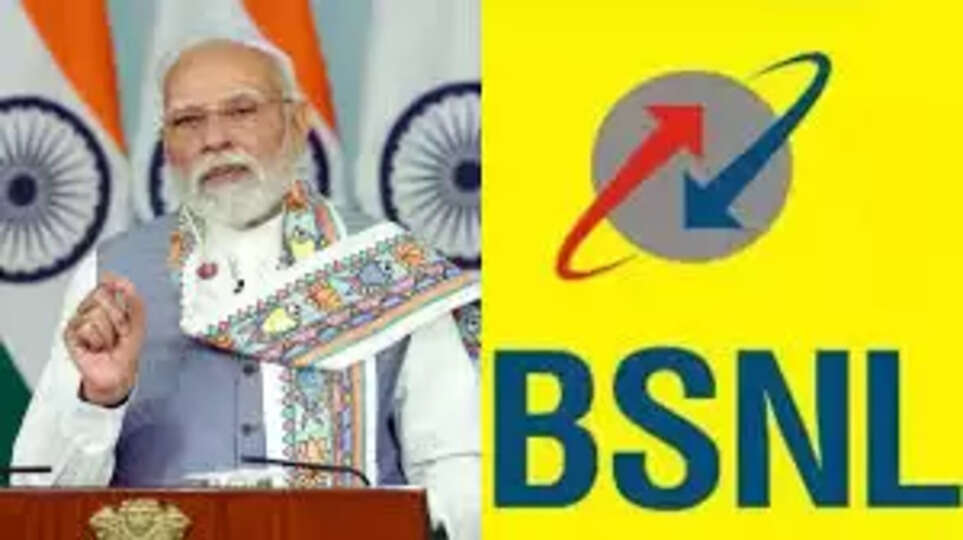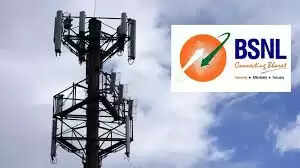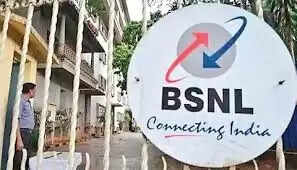India’s Big Telecom Leap: PM Modi Launches BSNL’s Indigenous 4G Network with 97,000+ Towers
PM Modi launches BSNL’s indigenous 4G network stack with 97,000+ towers, boosting India’s self-reliance in telecom. Learn its features, impact, and roadmap for Digital Bharat.

Introduction: A Landmark Day for Indian Telecom
September 27, 2025, will go down in history as a turning point for India’s telecom sector. Prime Minister Narendra Modi has officially launched BSNL’s indigenous 4G network stack, alongside the commissioning of 97,000+ domestically manufactured mobile towers across the country. This is more than just a network rollout — it’s a statement of India’s technological self-reliance and determination to secure digital sovereignty.
The Journey of BSNL: From Legacy to Modernization
Past Struggles and Competition with Private Operators
Bharat Sanchar Nigam Limited (BSNL), the government-owned telecom operator, has long struggled against private giants like Jio and Airtel. Outdated infrastructure, delayed spectrum upgrades, and financial stress pushed BSNL behind in the digital race.
Government’s Revival Strategy
Recognizing BSNL’s role in rural and border communications, the government initiated a revival plan worth thousands of crores. Today’s launch is the most significant step yet, modernizing BSNL’s infrastructure and placing it on par with global standards.
The Grand Launch: What Happened Today
97,000+ Indigenous Towers Commissioned
The Prime Minister inaugurated 97,500 mobile towers, many of which are already live. These towers will provide 4G coverage to 26,700 previously uncovered villages, ensuring no Indian is left digitally excluded.
Cost and Funding Sources
The rollout is backed by an investment of ₹37,000 crore under the Digital Bharat Nidhi (DBN) scheme, aimed at universal digital access.
Who Developed the 4G Stack
Unlike past rollouts dependent on foreign vendors, this 4G stack is fully indigenous:
-
C-DOT developed the core network
-
Tejas Networks built the Radio Access Network (RAN)
-
TCS integrated the entire system
Technical Backbone of the Indigenous 4G Network
Core Network by C-DOT
The Centre for Development of Telematics (C-DOT) designed the network’s heart, responsible for routing calls, data, and user management.
RAN by Tejas Networks
Tejas Networks, an Indian telecom equipment maker, produced the radio units and base stations connecting mobile devices to the network.
TCS as System Integrator
Tata Consultancy Services ensured seamless integration, making the system scalable and future-proof.

Why This Matters: Strategic Significance
Atmanirbhar Bharat in Telecom
This rollout directly supports the government’s Atmanirbhar Bharat vision by reducing dependency on foreign telecom vendors.
National Security and Digital Sovereignty
Telecom networks carry sensitive data. Owning the technology stack ensures greater control, cybersecurity, and resilience during global crises.
Technological Highlights
Software-Defined and Cloud-Native Design
The indigenous 4G stack is software-driven, allowing flexible scaling and efficient management.
Upgradability to 5G
The infrastructure is designed to be software-upgradable to 5G, avoiding the need for complete overhauls in the future.
Green, Solar-Powered Towers
Many towers are solar-powered, reducing energy costs and supporting India’s sustainability goals.
Connectivity Boost: Villages and Remote Areas
Coverage in 26,700 Uncovered Villages
This rollout bridges the digital divide, bringing internet access to villages, border areas, and tribal regions.
Benefits for Citizens
-
Education: Online learning becomes accessible.
-
Healthcare: Telemedicine can reach remote communities.
-
Governance: e-Governance services can be delivered digitally.
-
Agriculture: Farmers gain access to market prices and weather updates.
Challenges & Concerns Ahead
Deployment in Tough Terrains
Rolling out towers in forests, deserts, and mountains presents logistical hurdles.
Competition with Jio and Airtel
Private players already dominate the market with advanced 5G networks. BSNL must prove competitive with reliable service and pricing.
Financial Sustainability
While CapEx is government-backed, ongoing operational costs must be carefully managed to ensure long-term viability.

Global Comparisons: How India Ranks
Telecom Manufacturing Nations
Countries like China, South Korea, Sweden, and Finland dominate telecom equipment manufacturing. With this launch, India joins this elite club.
India’s Potential as an Exporter
If successful, India could export indigenous telecom technology to other developing nations, enhancing its global standing.
Impact on BSNL’s Revival
Subscriber Growth Prospects
Better coverage and modern infrastructure may attract new subscribers, particularly in rural and underserved areas.
Market Positioning
BSNL can reposition itself as a national digital backbone, complementing private operators.
Industry and Public Reactions
Industry analysts call this a bold leap forward, though they caution that execution and service quality will determine success. Public sentiment is positive, especially among rural communities who will benefit the most.
Roadmap Ahead: From 4G to 5G
The rollout will be monitored in phases. The next big step is seamless 5G integration, ensuring BSNL stays relevant in a rapidly evolving telecom market.
FAQs
Q1: What is special about this 4G rollout?
It is India’s first indigenous 4G network stack, built entirely by Indian companies without foreign dependency.
Q2: How many towers are being installed?
A total of 97,500 towers, covering 26,700 villages nationwide.
Q3: Who developed the technology?
C-DOT (core), Tejas Networks (RAN), and TCS (system integrator).
Q4: Can this network be upgraded to 5G?
Yes, it is future-ready and software-upgradable to 5G.
Q5: How much has the project cost?
The rollout cost is approximately ₹37,000 crore, funded under the Digital Bharat Nidhi scheme.
Q6: How does this benefit rural India?
It provides internet access for education, healthcare, governance, and commerce, helping bridge the digital divide.
Conclusion: A Milestone in India’s Digital Journey
PM Modi’s launch of BSNL’s indigenous 4G network is a historic milestone in India’s telecom journey. It symbolizes technological independence, rural inclusion, and future readiness. Challenges remain, but if executed well, this could transform BSNL into a powerful national asset and move India closer to becoming a global telecom powerhouse.
